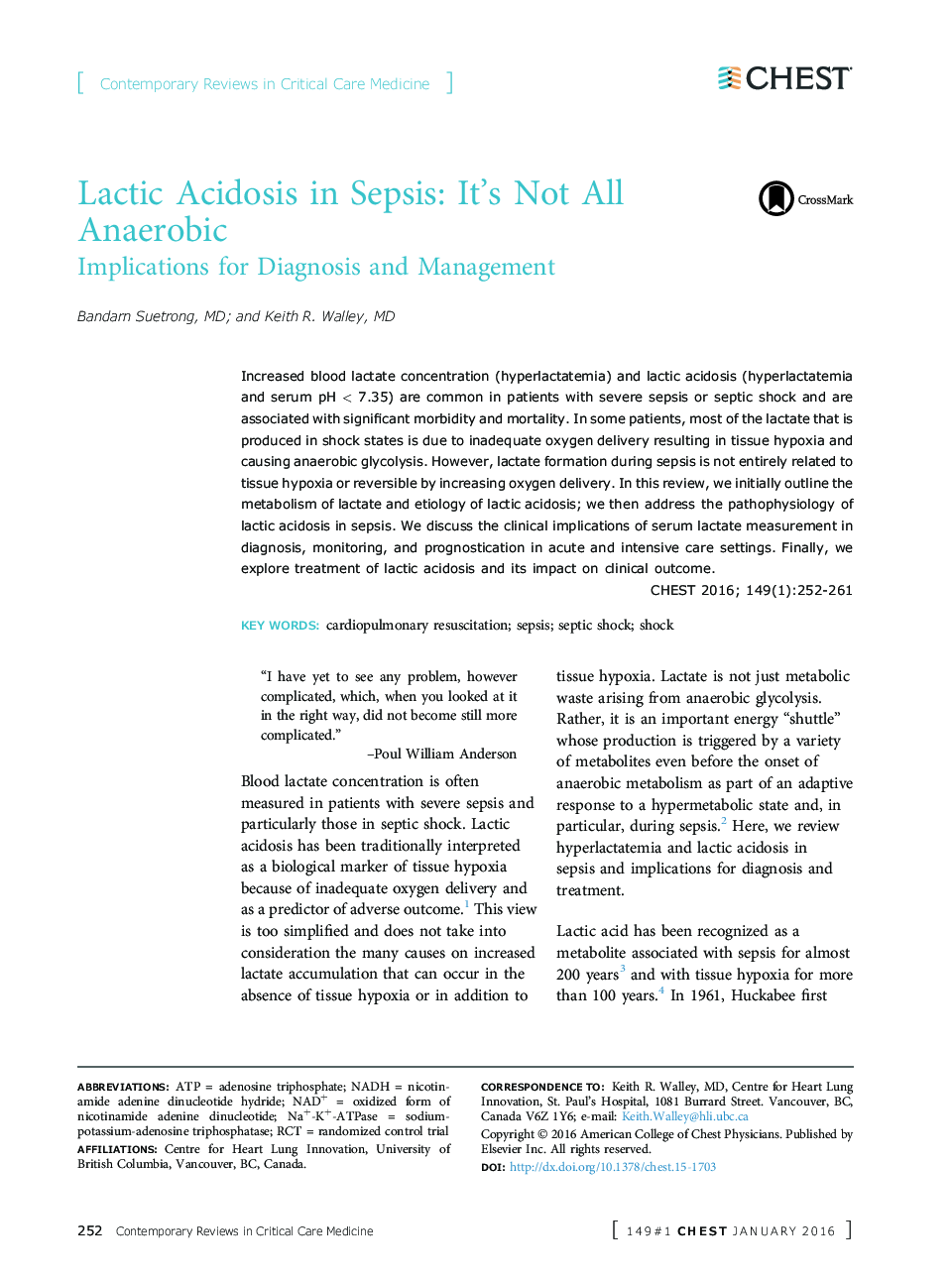| Article ID | Journal | Published Year | Pages | File Type |
|---|---|---|---|---|
| 5953046 | Chest | 2016 | 10 Pages |
Abstract
Increased blood lactate concentration (hyperlactatemia) and lactic acidosis (hyperlactatemia and serum pH < 7.35) are common in patients with severe sepsis or septic shock and are associated with significant morbidity and mortality. In some patients, most of the lactate that is produced in shock states is due to inadequate oxygen delivery resulting in tissue hypoxia and causing anaerobic glycolysis. However, lactate formation during sepsis is not entirely related to tissue hypoxia or reversible by increasing oxygen delivery. In this review, we initially outline the metabolism of lactate and etiology of lactic acidosis; we then address the pathophysiology of lactic acidosis in sepsis. We discuss the clinical implications of serum lactate measurement in diagnosis, monitoring, and prognostication in acute and intensive care settings. Finally, we explore treatment of lactic acidosis and its impact on clinical outcome.
Keywords
Related Topics
Health Sciences
Medicine and Dentistry
Cardiology and Cardiovascular Medicine
Authors
Bandarn MD, Keith R. MD,
